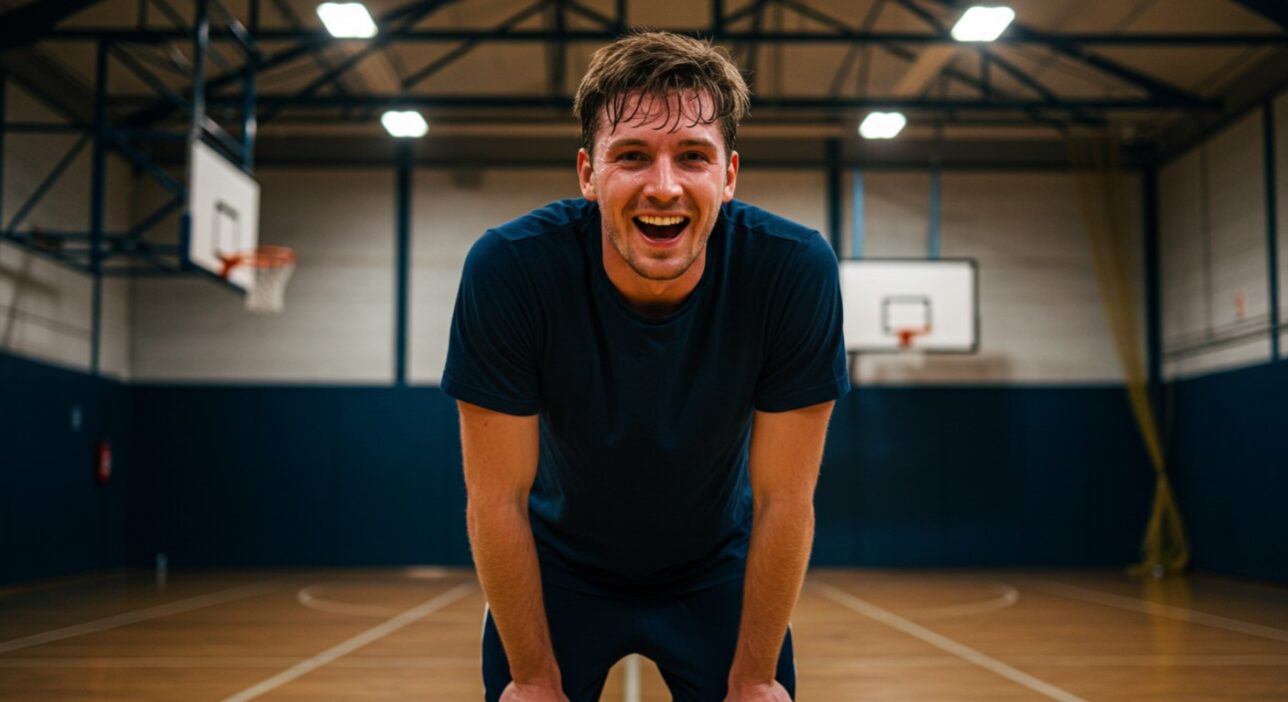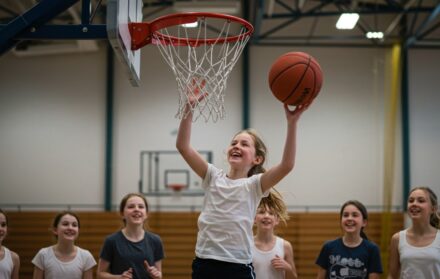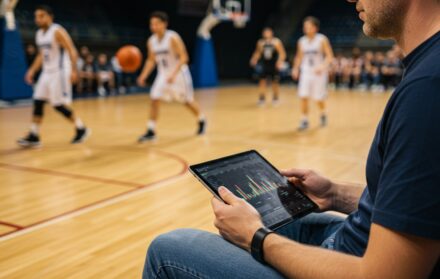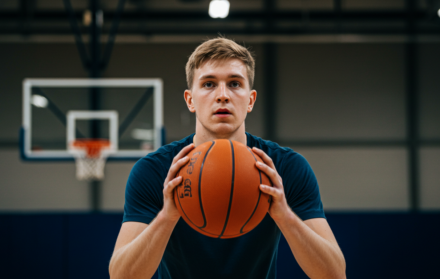
What Are the Best Mental Training Techniques for Basketball?
Basketball is often described as a game of speed, skill, and physical power. Yet anyone who has played even a few competitive matches quickly realises that the mental side of the sport is just as important as the physical. The pressure of making free throws in front of a noisy crowd, the frustration of a missed shot, or the need to bounce back after a tough loss all test a player’s mind as much as their muscles.
Mental training techniques for basketball are sometimes overlooked by beginners and even by developing players, but they can be the hidden advantage that separates good athletes from great ones. Within basketball culture, the physical grind is celebrated, but the mental grind is what allows players to thrive under pressure and find consistency. While you can work on dribbling drills and shooting percentages in the gym, it is equally valuable to train your focus, confidence, and resilience. These mental skills give you the edge in close games, help you recover from mistakes quickly, and prepare you to perform under pressure.
This guide explores the best mental training techniques for basketball. From visualisation and breathing to goal setting and routines, each section will offer practical steps you can apply both on and off the court to sharpen your mental game.
Visualisation and Mental Rehearsal

One of the most powerful tools in sports psychology is visualisation. This technique involves using your imagination to rehearse successful actions before they happen. In basketball, that could mean picturing yourself hitting a free throw, stealing the ball, or making a perfect pass.
When you visualise, your brain activates many of the same pathways it uses during physical movement. Studies have shown that mental rehearsal improves accuracy, confidence, and readiness. Elite players from Michael Jordan to Kobe Bryant have used visualisation before big games to prepare their minds for success.
How to practise visualisation:
- Find a quiet spot and close your eyes.
- Picture the basketball court in detail: the floor, the hoop, even the sounds.
- Imagine yourself making a specific play, such as a free throw.
- See yourself completing the action smoothly and confidently.
- Repeat regularly until the mental picture feels natural.
Beginner tip: Start with simple scenarios like free throws, then gradually move to more complex plays such as running a fast break or defending against a tough opponent.
Breathing and Relaxation Techniques
Anxiety, nerves, and tension can ruin performance. Learning to control your breathing is one of the simplest yet most effective mental training techniques for basketball.
Box breathing is a popular method. You inhale for four seconds, hold for four, exhale for four, and hold for four again. This slows your heart rate and calms your mind. Many players use this before stepping up to the free-throw line or entering a pressure moment.
Another technique is progressive muscle relaxation. By tensing and then relaxing each muscle group from your shoulders down to your toes, you can release tension and improve focus.
When to use breathing techniques:
- Before a game, to reduce nerves.
- During timeouts to regain focus.
- At the free throw line or in late-game situations when pressure is highest.
Positive Self Talk and Confidence Building

Your inner voice can either lift you up or hold you back. Negative self-talk talk such as “I am going to miss” or “I always mess this up”, creates doubt and stress. Replacing those thoughts with positive affirmations can shift your mindset.
Examples of positive self-talk in basketball:
- “I have trained for this shot, I am ready.”
- “Strong, focused, calm.”
- “Next play, keep moving forward.”
Many players find it useful to create a personal mantra they repeat before games or during tense moments. This becomes a mental trigger for confidence.
It is also important to avoid harsh self-criticism after mistakes. Missing a shot or committing a turnover does not define you. Learn from the error, then reset mentally and move on.
Goal Setting for Motivation and Progress
Clear goals give players direction and motivation. Without them, it is easy to drift through practice or lose focus during the season.
Short-term goals keep you engaged day to day. For example:
- Hit 7 of 10 free throws during warm-up.
- Limit turnovers to fewer than two in a scrimmage.
- Keep a defensive stance low for every possession.
Long-term goals push you towards development over months and years:
- Improve your shooting percentage by 5 per cent.
- Earn more minutes on the team.
- Build the mental toughness to handle close game pressure.
The SMART framework is useful for basketball goal setting:
- Specific: Define exactly what you want to achieve.
- Measurable: Track progress with numbers or outcomes.
- Achievable: Set goals within reach.
- Relevant: Ensure the goal helps your overall growth.
- Time-bound: Give yourself a deadline.
Pre Game Routines and Rituals

One reason professional players look so calm before tip-off is that they rely on established routines. These rituals reduce anxiety and help the mind focus.
Routines can be simple or detailed. Some players listen to the same playlist before every game. Others go through a series of stretches or shooting drills, often in the same shoes or favourite basketball gear that signals “game time” to their mind. The key is consistency. When you repeat the same steps before each game, you send your brain the signal that you are ready.
For beginners, start small:
-
Take a few deep breaths.
-
Listen to music that boosts focus.
-
Stretch or go through a favourite warm-up move.
Over time, your routine becomes a mental anchor that keeps nerves under control and helps you enter the game with confidence.
Focus and Concentration Techniques
Basketball is fast and full of distractions. A loud crowd, an aggressive opponent, or your own thoughts can pull you off track. Building concentration is therefore vital.
One useful strategy is the one play at a time mindset. Instead of thinking about the scoreboard or the last mistake, commit fully to the current possession.
Another method is using triggers. For example, many players dribble three times before shooting a free throw. That small ritual tells the brain to lock in.
Drills for concentration under fatigue:
- Shooting drills at the end of practice when tired.
- Defensive drills where players must react quickly to coaches’ calls.
- Simulated game pressure situations with teammates watching.
Resilience and Mental Toughness

Every player makes mistakes. What separates strong players is how quickly they recover. Mental toughness is about resilience: the ability to bounce back after errors or setbacks.
Adopting a next-play mentality helps. If you miss a shot, immediately prepare for defence. If you lose the ball, sprint back down the court. Dwelling on mistakes slows you down.
Failure is also a teacher. Many pros struggled early in their careers before becoming stars. Michael Jordan was famously cut from his high school team. Rather than giving up, he used that setback as fuel.
Steps to build resilience:
- Accept mistakes as part of the game.
- Review what went wrong after the game, not during it.
- Use challenges as motivation to improve.
Team Communication and Leadership Mental Skills
Basketball is not only an individual test of skill, but it is also a team sport. Mental strength also shows in how you communicate and lead.
Strong teammates remain calm and supportive even when the game is not going well. Instead of criticising, they encourage. Instead of showing frustration, they project confidence.
Leadership does not always mean being the loudest voice. Sometimes it means setting the example through hustle, effort, and focus. Positive energy spreads through a team and reduces collective stress.
Mental communication tips:
- Use short, clear phrases like “switch”, “shot”, or “help”.
- Encourage teammates with high fives or quick words after mistakes.
- Stay composed to give the team confidence.
Using Journals and Reflection
Mental training improves when you track your progress. A basketball mindset journal can be a powerful tool.
After each practice or game, write down:
- What went well?
- What you need to improve.
- How did you feel mentally and emotionally?
- Any goals for the next session?
Over time, patterns will emerge. You may notice certain routines help you perform better, or that particular thoughts hold you back. Reflection helps you grow both as a player and as a person.
Conclusion: Strong Mind, Strong Game

Basketball success requires more than speed, strength, and skill. The mind plays a central role in every pass, shot, and defensive stop. By adding mental training to your practice, you gain tools that prepare you for high-pressure moments, build resilience, and improve overall performance.
Visualisation, breathing techniques, positive self-talk, goal setting, pre-game routines, focus drills, resilience strategies, and journaling all form a toolkit any player can use. You do not need to adopt every method at once. Start with one, practise it regularly, and slowly build mental skills into your routine.
The best basketball players train their bodies and their minds. With dedication to mental training, you will not only become a more confident athlete but also enjoy the game at a deeper level. A strong mind leads to a strong game.





